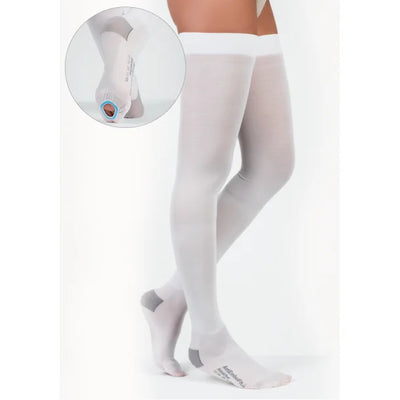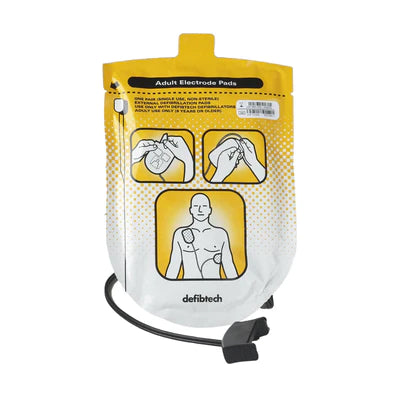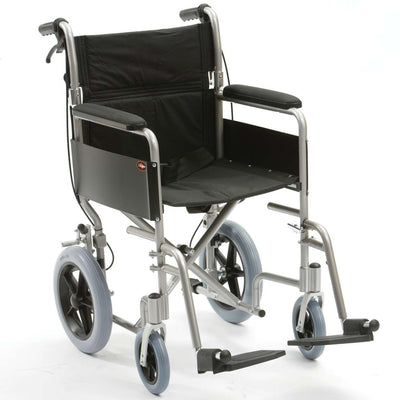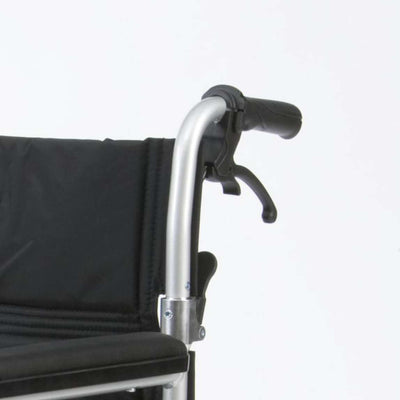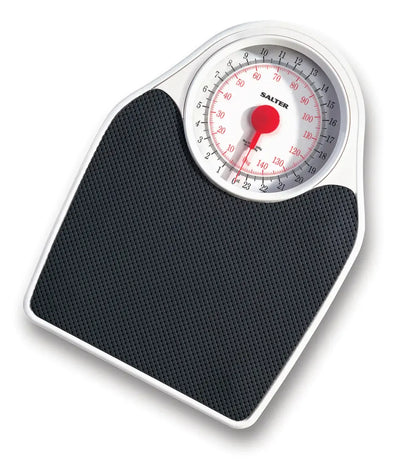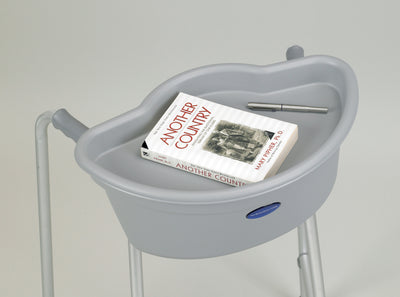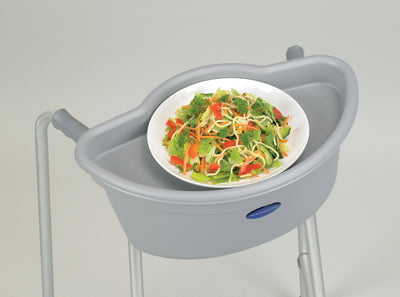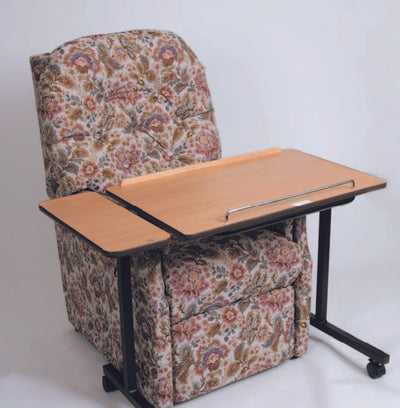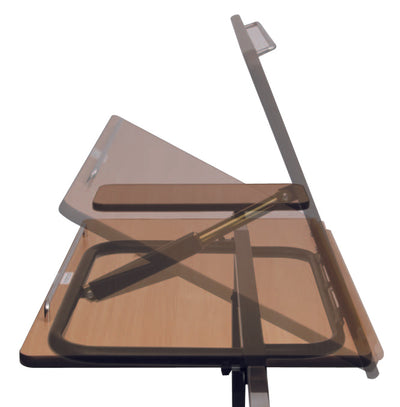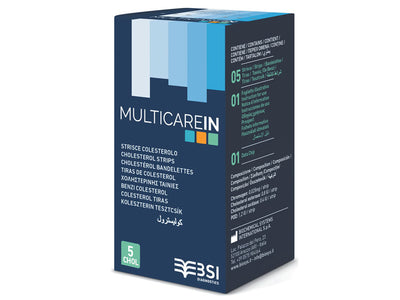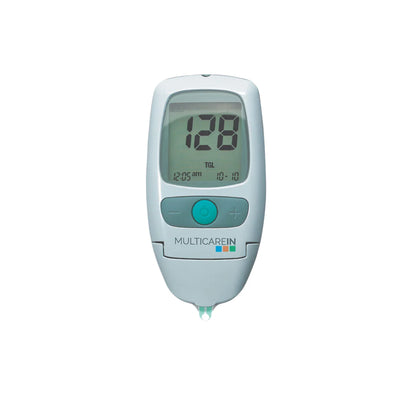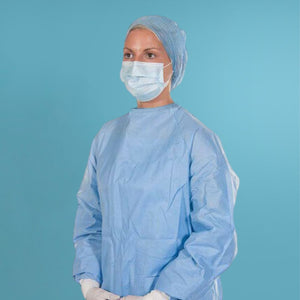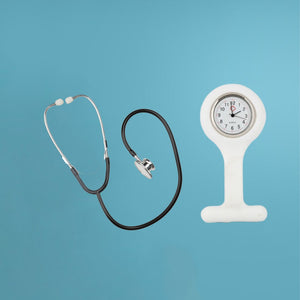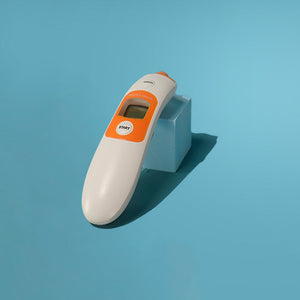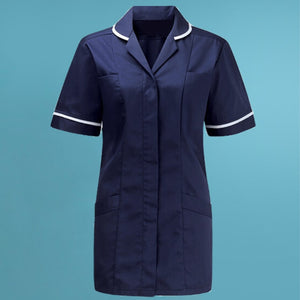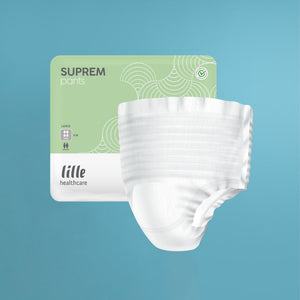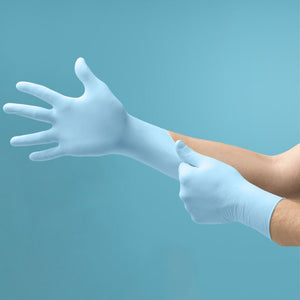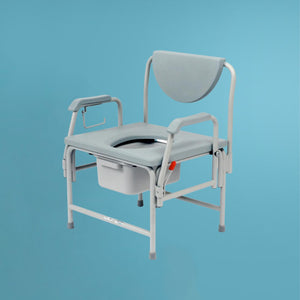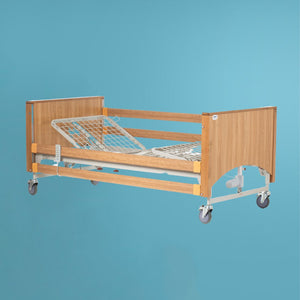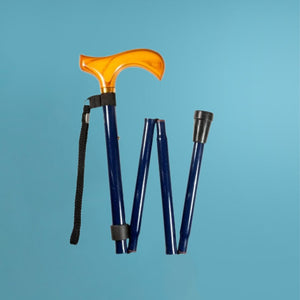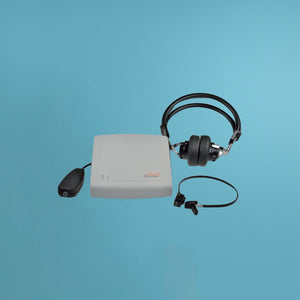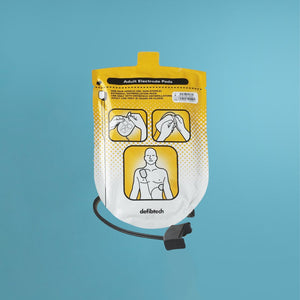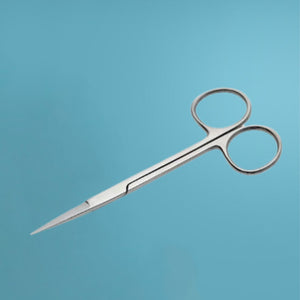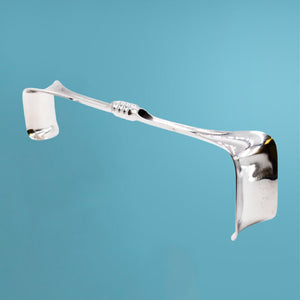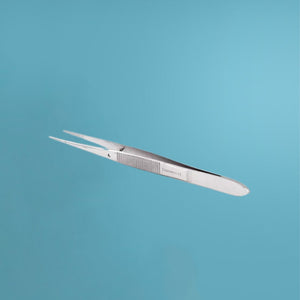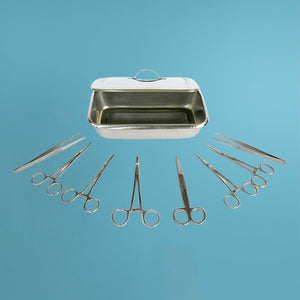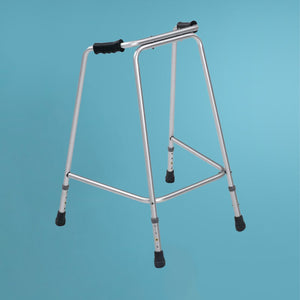Blogs
Fueling the future of healthcare through accessible and effective medical education.

Bunions - The Mediworld Footcare Guide
07.02.2024
If you’ve ever suffered from bunions you’ll know the pain and discomfort that they can cause. Not to mention the unsightly bulges or even deformities they can cause on your feet.
So, in the first of our series of foot care blogs, we’re looking at bunions - how they develop, what symptoms to look out for and how to take care of your feet to treat and avoid them in the future.
What is a bunion?
A bunion (or hallux valgus) is essentially a large, firm bump that develops at the base joint of the big toe. Usually, and often for unknown reasons, the big toe will have begun to angle itself towards the second toe and the tissue at the base of the big toe joint will be visibly thickened, inflamed and often painful.
This thickening is the bunion and, unfortunately, it will begin to cause irritation and pain as it rubs on shoes and footwear until it can be treated effectively.
Why have I developed a bunion?
It’s not always obvious why a bunion will develop in some people and not others. However there are a few factors that will make you susceptible to the condition:
Genetics. Often bunions will run in families
Joint problems like rheumatoid arthritis or osteoarthritis can be high risk factors in the development of bunions
Wearing badly fitting shoes, stilettos, narrow footwear etc
Wearing shoes that are too tight or create too much pressure on the big toe joint is the most common reason why people develop bunions. Tight fitting shoes tend to make the skin rub (even although you may not have blisters) and cause friction to the tissue, which in turn thickens it and causes the bunion to develop.
How to treat a bunion
Treatment will vary depending on the severity of the bunion. In the first case your GP or podiatrist will probably recommend that you wear well fitting shoes that allow the foot enough space to avoid further rubbing of the bunion and tissue. A good pair of wide-fitting slippers is also a useful part of your bunion recovery programme.
Along with this you will be advised to wear toe padding like a gel bunion sleeve or a bunion corrector or bunion straightener that will gently encourage the toe to move back into a straight position and relieve the pain associated with the bunion.
To prevent pain caused by the bunion the GP might prescribe a general painkiller like paracetamol or Ibuprofen. In some circumstances you might be prescribed antibiotics to reduce the inflammation and pain.
In more severe cases, you may be sent for surgery if wearing better footwear and using a bunion corrector has failed to work. The goal of the surgery is to correct the cause of the bunion and to prevent the bunion from growing back and can be very effective. For those with more severe bunions, surgery can be life changing in terms of removing pain, frustration and long-term damage to the feet.
When to seek medical help for bunions
Contact a health care professional if you have persistent pain and a visible bump along the first toe, difficulty moving your toe or foot or difficulty finding shoes that fit properly because of pain or because the first toe has changed shape.
Need more help choosing footcare products? We're always here to help so get in touch today.
For all your Medical and Homecare supplies give us a call at Mediworld.
We have over 40 years experience in medical, surgical, mobility and home health supplies and we're always on hand to chat if you need support or advice. Follow us on Twitter and Facebook and don't forget to read our other great health blogs!
Learn More Now
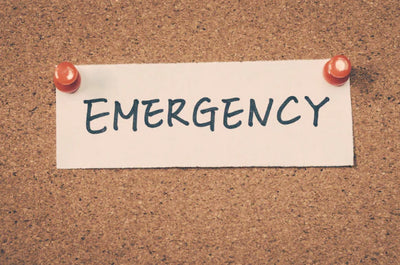
What is inside an emergency trauma kit
07.02.2024
Unlike a standard first aid kit, a medical trauma kit is an essential piece of kit for treating more serious, major injuries with confidence until emergency medical care can be received. In public spaces, agricultural/forestry settings or factory/industrial work spaces, having access to a trauma kit can make the difference between life and death.
What’s the difference between a trauma kit and a first aid kit?
An emergency trauma kit is designed to treat major, life threatening injuries. It’s there to allow you to keep the patient stable until emergency medical professionals can get to the site and begin treatment.
So while some trauma kits can include basic essentials like plasters and bandages, their primary function is to include more specialist equipment to treat more serious injuries. Trauma kits are not a replacement to first aid, but are essentially specialised additions for, hopefully, rare but life threatening moments.
Essential Trauma Kit items:
A standard trauma kit should essentially include items useful for stemming the flow of serious blood from various parts of the body.
Being able to stem major bleeding at the site of an incident increases the chances of saving a life. A person can die within just 5 minutes if blood loss is severe, so make sure your emergency trauma kit includes:
Tourniquets - to treat major blood loss or severed limbs
Wound packings/Hemostatic Gauze - sterile packings used to speed up the clotting of blood which might be pooling at the wound site.
Chest Seals - used to stem bleeding in the chest area
Trauma Dressings/Compression Dressings - with non-adhesive pad to avoid re-opening of the wound on removal
Emergency Blanket - to prevent hypothermia caused by excessive blood loss.
Additional Trauma Kit Items:
Gloves - for protection and to prevent cross contamination of bloods and body fluids
Scissors - to allow for opening of clothing to treat the wound.
Epipen/antihistamine
Tweezers
Digital Thermometer
Distilled Water
Different Types of Emergency Trauma Kits
What kit do I need?
While you can put together your own trauma kit, it’s often better to buy a ready made critical injury kit specifically designed for the environment you’re in.
We provide emergency trauma kits for a variety of scenarios from workplaces and factories to vehicle or mass injury incidents and international relief agencies in war zones.
Is Specialist Training Required?
In short, if you’re likely to need an emergency trauma kit you would be advised to have training in order to properly use the tourniquets and dressings correctly to effectively stem the flow of blood.
For industries like construction, hospitality, events, agriculture, forestry etc where there is a risk of danger involved it’s advisable to not only have your site kitted out with several trauma kits but to also make sure a number of your staff are duly trained in correct use. In the case of a major accident it really will make the difference between life and death.
Need more help? We're always here to help so get in touch today.
For all your Medical and Homecare supplies give us a call at Mediworld.
We have over 40 years experience in medical, surgical, mobility and home health supplies and we're always on hand to chat if you need support or advice and don't forget to read our other great health blogs!
December 2022
Learn More Now

Which Thermometer Do I Need? And How to Use It Effectively
07.02.2024
A reliable thermometer is an essential part of your home, or office, first aid kit. A good thermometer will give you an accurate recording of someone’s body temperature, and will therefore act as a good indicator of whether they are seriously unwell or fighting illness.
With so many different models on the market though, choosing the right thermometer can be confusing.
So, read on for our guide to buying an accurate, cost-effective and easy to use thermometer to take the guesswork out of the equation when you need to use it on a sick loved one or colleague.
What are the Different Types of Thermometer?
Digital Thermometer
Digital thermometers are cheap and effective pieces of kit to have in your first aid box. They use in-built heat sensors to quickly record body temperature, in fact most will display an accurate temperature in seconds. They can be used to take temperatures from the ear, mouth, armpit, or rectum and some have a large screen display that can make reading the results much easier.
Digital thermometers, however, do have batteries that will inevitably run low and can stop working just at the moment you need them. So it’s worth remembering that if you have a digital thermometer you should make sure you have spare batteries on hand and know how to change them, should you need to act quickly in an emergency situation.
Forehead Thermometer
Handheld, forehead thermometers or non-contact infrared thermometers, use infrared sensors to measure the temperature of the temporal artery - the blood vessel that runs across your forehead. They’re able to record temperature very quickly and do this by scanning and recording hundreds of measurements per second of the heat that the body is giving off.
Forehead thermometers are non-invasive, simple to use and are often the preferred option for ease of use on children (*although it must be noted that clinicians generally agree that rectal thermometers are the most accurate, particularly with children).
They also require no physical contact so are useful for use in schools, workplaces. shops or public spaces where there is concern about the spreading of infection.
However, you do need to make sure that the infrared sensor is accurately placed on the forehead, or it won’t record a true reading. They can also be affected by external factors such as weather, wind, air conditioning or even clothing.
Digital Ear Thermometers
Ear thermometers or Tympanic thermometers measure the temperature inside the ear canal through infrared ray technology. They’re easy to use and record results in just seconds.
Using an ear thermometer on infants can be less stressful than an oral or rectal option. Smaller, pocket-sized ear thermometers are also available for carrying in changing bags or day packs.
Remember
The best thermometer is always the one that you can use most comfortably and correctly. Most, if used correctly, will give an accurate enough reading for you to be able to determine if further medical support is required.
When using a digital thermometer make sure that you have placed the digital sensor directly under the mouth, properly into the rectum or comfortably into the ear or armpit to get an accurate reading. If you’re taking a measurement from under the tongue your thermometer reading can be less accurate if food or drink has been taken within the last 15 minutes.
Do remember that with any digital thermometer you will need to regularly check that the batteries are fresh and it’s in good working order, to avoid that emergency panic when you need it most.
Need more help? We're always here to help so get in touch today.
For all your Medical and Homecare supplies give us a call at Mediworld.
We have over 40 years experience in medical, surgical, mobility and home health supplies and we're always on hand to chat if you need support or advice and don't forget to read our other great health blogs!
November 2022
Learn More Now
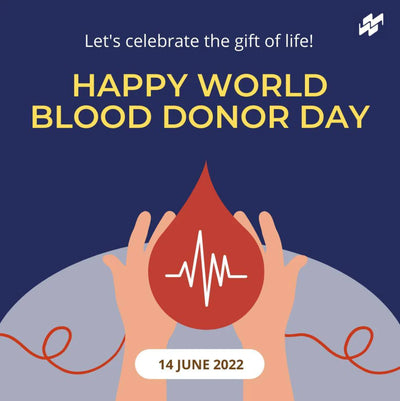
5 Reasons for Giving Blood
07.02.2024
This week is National Blood Week, including World Blood Donor Day, so today’s blog is a timely reminder of why giving blood is such an important thing to do.
According to NHS Blood and Transplant, we need 5000 daily donations to produce enough supplies to treat patients requiring blood transfusions. That means we need around 135,000 new donors every year in England alone.
Sadly, the covid pandemic of the last two years has seen a dramatic decline in existing and new donors booking in to donate. In fact that rate is down by a whopping 40%.
So here are some great reasons why you should sign up to give blood today:
You’ll be a Life Saver!
The bottom line is that when you donate blood you play your part in helping to save lives. Blood donations help thousands of seriously ill patients across the country every single day, through emergency operations, C-Sections, cancer treatment and more.
In fact, every donation you give can actually save or improve the lives of up to three adults or six children. All that for less than an hour of your time!
You Could Have a Rare Blood Type That’s Needed
We all have different blood types which means that when a patient needs a transplant they will need to receive the same blood type or one that is compatible with theirs.
O negative blood is known as the universal blood type because it is safe for everyone to receive - and, as a result, if you have 0- blood your donation will be able to help more desperately ill people.
Some blood groups are rare enough to have very few donors, and this is especially true in the BAME community amongst which there is a very low turnout for donations. Sadly when the need occurs, these supplies will be hard to come by if more donors don’t come forward to help out. In fact, in the UK there is currently only ONE donor from blood type -D-.
If you sign up to donate blood you might find that your blood is one of the rarer types, meaning that your donation will be incredibly welcome.
Blood Supplies Have a Short Shelf Life
Not only does the NHS need lots of donors, it needs them to continue to donate because blood supplies cannot be kept indefinitely. In fact, red blood cells can only be stored for 35 days while blood platelets have to be used within 7 days of donation.
So frequent blood donations will keep the blood banks of the UK topped up - and you can help to make that happen.
Young Blood Rules
Most donors in the UK are over 45, but did you know that you can donate blood from your 17th birthday? In fact, more young donors are needed to boost the national supplies at the moment. The more we can encourage young donors to get involved, the more secure the future of blood banks will be.
Not so young anymore? Don’t worry. You can donate blood for the first time right up until your 66th birthday. The sooner you start, the better. Men can donate blood every 12 weeks, while women can donate every 16 weeks (to allow for iron levels to return to normal) so the younger you are when you begin donating blood, the more lives you can save throughout your own life. Now that’s as good a reason as any to register today!
It’s Quicker than you think
It really doesn’t take long to donate blood. Once you’ve booked an appointment online, it takes less than an hour to give your donation. In fact, the majority of that time is taken up with chatting to the nurse, having a few blood pressure/blood type checks done, filling in a form and waiting your turn. The actual blood donation part can take as little as 5 or 6 minutes! It really is over and done with before you know it.
Most people find that giving blood is a much more pleasant experience than they had imagined, and to say thank you, you’ll be rewarded with a nice cuppa and even a biscuit at the end.
If you’ve never given blood before you might want to check out or Guide to Giving Blood Blog to find out more about the process.
Need more help? We're always here to help so get in touch today.
For all your Medical and Homecare supplies give us a call at Mediworld.
We have over 40 years experience in medical, surgical, mobility and home health supplies and we're always on hand to chat if you need support or advice and don't forget to read our other great health blogs!
June 2022
Learn More Now

5 Reasons You're So Tired
12.02.2024
We all feel tired from time to time, in fact feeling exhausted is so common that GPs have an acronym for the condition - TATT, Tired all the time!
Often we’ll feel tired if we’ve had too many late nights, lots of stress at work, over exercising or perhaps a baby keeping you up at night.
But when tiredness or exhaustion go on for significant periods of time they can begin to affect your life and your ability to get on with working and doing the things you enjoy doing. If this is the case, it might be time to seek help and book an appointment with your GP. You might be suffering from one of these health conditions known to cause tiredness or fatigue.
Anaemia
One of the most common medical reasons for feeling constantly run down is iron deficiency anaemia.
Symptoms of anaemia will make you feel lethargic with tired, heavy muscles. You might feel like you just can’t be bothered to do or plan anything and that easy tasks have begun to feel like bigger challenges to face.
Often women with heavy periods or who are pregnant can experience bouts of anaemia and it’s usually very easy to treat with iron tablets or supplements being prescribed to redress the imbalance in blood levels.
Anaemia can also affect men and postmenopausal women - in this case the cause is likely to be related to stomach and intestine problems, such as an ulcer or over use of non-steroid anti-inflammatory drugs. Seeking advice from your GP is important in this case to identify the issue.
Sleep apnoea
Your tiredness could simply be down to a lack of good quality sleep which is often caused by a condition called sleep apnoea. If you suffer from sleep apnoea your throat will narrow or close during sleep and will repeatedly interrupt your breathing.
When this happens, not only will you snore quite loudly but your blood’s oxygen levels will dramatically drop. Added to this sleep apnoea sufferers will regularly wake in the night because of the difficulty with breathing, which means waking up feeling exhausted the next day.
It's most common in overweight middle-aged men. Drinking alcohol and smoking makes it worse. Your GP might suggest that you wear a gum shield or mask to aid breathing in the night, or if conditions are more severe surgery to help your breathing (like removing tonsils) can prove successful.
Underactive thyroid
Another reason for chronic tiredness could be related to your thyroid, in particular if you’re suffering from an underactive thyroid, or hypothyroidism.
Hypothyroidism occurs when the thyroid gland stops producing the hormones the body needs to regulate your metabolism (in other words, the process that turns food into good energy). When the thyroid stops working properly many of the body’s functions slow down, making you feel slow, tired and sluggish.
You might also put on weight and have aching muscles and dry skin if your thyroid stops working and it's most common in women and happens more often as you get older.
Your GP can diagnose an underactive thyroid by taking a simple blood test, and it can be treated easily with replacement hormone tablets.
Diabetes
Diabetes is a lifelong condition that causes a person’s blood sugar level to become too high. One of the main symptoms of both type 1 and type 2 diabetes is feeling very tired.
In type 1 diabetes the body’s immune system attacks and destroys the cells that produce insulin.
In type 2 diabetes, either the body does not produce enough insulin or the body’s cells don’t react efficiently to insulin.
Type 2 diabetes is more common than type 1, in fact in the UK around 90% of all adults with diabetes have type 2.
If you’re feeling tired and exhausted, feeling thirsty, peeing a lot (especially through the night) and you’re losing weight, it’s a good idea to ask you GP to run blood tests to check for diabetes.
Depression
Depression affects people in many different ways and can cause a wide variety of symptoms including making you feel drained of energy and the ability to get up and go.
Often it can stop you falling asleep, interrupt your sleep or cause you to wake up early in the morning, which makes you feel more tired during the day - and can make dealing with the condition even more difficult.
Many people wait a long time before seeking help for depression but it’s best not to put it off. There is a huge amount of help available and the sooner you see a doctor the sooner you can be on your way to recovery.
For all your Medical and Homecare supplies give us a call at Mediworld. We're always here to help so get in touch today.
We have over 40 years experience in medical, surgical, mobility and home health supplies and we're always on hand to chat if you need support or advice. Follow us on Twitter and Facebook and don't forget to read our other great health blogs!
Learn More Now
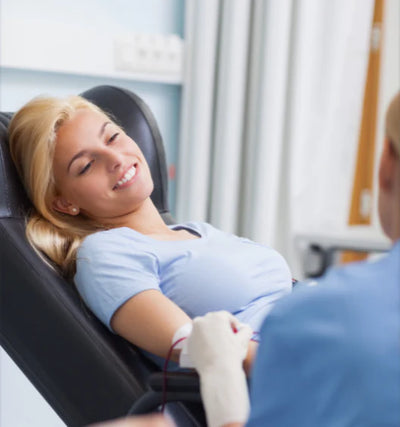
Guide to Giving Blood
07.02.2024
Have you ever given blood? No? There are lots of reasons why you might never have gotten round to donating to your local blood bank but, here in the UK, the NHS is heavily reliant on our voluntary blood donations to continue saving lives and offering on-going treatment to those who need it.
Read on for our first timers’ guide to giving blood and follow the link at the end to book your first appointment in today. Giving blood is incredibly quick and easy to do and you’ll be rewarded with the knowledge that you’ve helped someone in need, and got yourself a tasty cuppa and a biscuit into the bargain!
Why Should I Give Blood?
The bottom line is that giving blood saves lives. Donating blood is the equivalent of giving a life-saving gift to a stranger - and it’s difficult to imagine a more worthwhile thing to do.
Blood (or the components of blood) is used to treat patients with medical conditions such as anaemia, blood cancer disorders, and those having surgery. Blood transfusions are routinely needed for patients with:
Sickle Cell Anaemia
Thalassaemia
Cancer treatment
End of Life treatment for conditions with no cure
Emergency C-Sections during childbirth
Amputations and other emergency operations
How much Blood is needed in the UK?
The NHS in England alone uses over 1.6 million pints of blood every year to patients with a variety of health and emergency conditions. In short that means they need:
Nearly 400 new donors a day to meet demand
Around 135,000 new donors a year to replace those who can no longer donate
40,000 more black donors to meet growing demand for better-matched blood
30,000 new donors with priority blood types such as O negative every year
More young people to start giving blood to ensure sufficient stocks in the future
Who Can Give Blood?
Almost everyone is eligible to give blood, although there may be times when illness or circumstances will rule you out of donating for a short period of time. You cannot give blood if you are:
Suffering from a cold or similar infection
Pregnant
If you have had a blood transfusion during childbirth or elsewhere
If you are receiving certain medical treatment or taking certain prescription medicines
Have recently had a tattoo or piercing
A man who has had oral or anal sex in the previous 3 months
Suffering from Covid or are experiencing symptoms
Taking antibiotics for an infection You must wait until you are completely healed or for 14 days after taking your last tablet.
Recovering from some dental treatments e.g, root canal, extraction etc
You CAN give blood 7 days after receiving your vaccination for the Coronavirus.
It is always best to check your current eligibility with the Blood Donation website before making an appointment.
What Happens When I Donate Blood?
Giving blood is incredibly quick and easy - and can take as little as 5-10 minutes to make your donation. On the day of your appointment you will be registered and asked to fill in some basic health forms.
You’ll be encouraged to drink some water to help with your wellbeing during and after the donation.
You will be given a quick health screening which involves a tiny finger prick blood test to check that you have enough haemoglobin (iron) in your blood and you will be asked to answer a few questions regarding your current health etc.
If you’re good to go, you’ll be taken to a very comfortable donation chair where a blood pressure cuff will be fitted on your arm - this is not to measure your blood pressure, however, but to apply a slight pressure to the arm to allow for a quick flow of blood. The chair might be reclined slightly to raise your feet and the nurse will identify a suitable vein and wipe the area with antibacterial liquid.
Following the quick and painless needle insertion, you will be left to relax while your body gets on with the blood donation process. You will likely be given a small stress ball to hold and squeeze during the donation to increase the flow of blood.
The donation should only take 5-10 minutes and will stop automatically when the level has reached 470ml, at which point the nurse will remove the needle and apply a small, sterile dressing to the arm.
Time for a Biscuit!
You will be encouraged to stay in the waiting area for around 15 minutes (or more) after your donation to make sure you’re feeling fine and ready to get on with your day. On your first donation you might only be allowed to drink cold water (hot drinks are on offer for your future donations) but there is always a great selection of chocolate biscuits, crisps, fruit and snacks for you to enjoy.
You will be able to leave after this short rest and should be more than fine to carry on with whatever your day entails - although it’s best not to have a hot bath or a sauna for 24 hours after your donation.
Fancy registering to Give Blood today? Follow this link and become one of the UK’s most important lifesavers.
Need more help to improve the disabled access to your business? We're always here to help so get in touch today.
For all your Medical and Homecare supplies give us a call at Mediworld.
We have over 40 years experience in medical, surgical, mobility and home health supplies and we're always on hand to chat if you need support or advice. Follow us on Twitter and Facebook and don't forget to read our other great health blogs!
Learn More Now
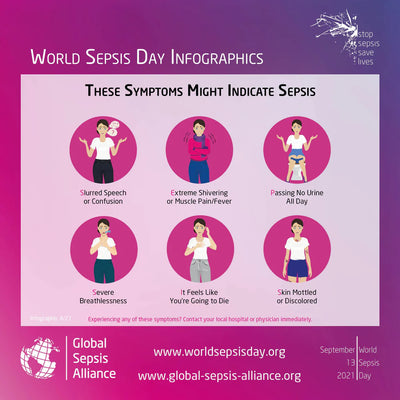
Always Ask - Could it be Sepsis?
03.02.2024
It’s a condition that many of us know very little about. It’s fast acting and can be fatal. In fact 5 people die with sepsis every hour and over 1000 children die of sepsis every year in the UK alone. Yet Sepsis is the most preventable cause of death worldwide.
It’s currently Sepsis Awareness month in the UK and it’s an important time to raise awareness of this largely misunderstood and often undiagnosed condition.
So here’s our guide to the signs and symptoms of Sepsis and what to do if you suspect you or a loved one might be affected by the condition.
What is Sepsis?
Sepsis (sometimes known as blood poisoning) happens when the immune system overreacts to an infection or injury - e.g. flu, covid, lung infection, gastric flu, external skin wound etc.
Usually our immune system fights infection, that’s what it’s there for. But sometimes, for reasons we don’t yet understand, it actually attacks our body’s own organs and tissues causing them to shut down and fail.
Who can get Sepsis?
Simply put, anyone can get sepsis. No matter how fit and healthy you are or what your socio-economic status may be. If you contract a virus, flu or even simply cut yourself you are at risk of developing sepsis.
We don’t yet know why the immune system can sometimes go into attack mode when fighting infection, but we DO know that it can happen to ANY of us.
However, some people are at a higher risk of Sepsis if they have developed another infection:
Those with a weaker or compromised immune system
Anyone over the age of 60
People with lung, liver or heart conditions
Young children under the age of 1
HIV, aids or diabetes sufferers
What are the Symptoms of Sepsis?
Sepsis can initially look and feel like flu, gastroenteritis or a chest infection so it’s, understandably, hard to detect. Unfortunately there is no one sign of sepsis, and symptoms present differently between adults and children.
However, if you develop any of these symptoms you should seek urgent medical help and make sure you ask ‘could it be sepsis’?
Slurred speech or confusion
Extreme shivering or muscle pain
Passing no urine (in a day)
Severe breathlessness
It feels like you’re going to die
Skin mottled and discoloured
How to spot sepsis in children
Is breathing fast
Has a fit or convulsion
Skin looks mottled, bluish or pale
Has a rash that doesn’t fade when pressed on
Is lethargic and difficult to wake
Feels unusually cold to touch
A child under 5 might have sepsis if he/she
Is not feeding
Is vomiting repeatedly
Hasn’t passed urine in 12 hours
Always seek urgent medical attention and ask ‘Could it be Sepsis’?
Can Sepsis be treated?
Yes, it can. If it’s not treated immediately, sepsis can result in organ failure and death. Yet with early diagnosis, it can be treated with antibiotics. Most people who are treated early will make a full recovery however later detection can lead to longer term health conditions so acting quickly is key.
The more people know about Sepsis the more lives can be saved.
Always ask, could it be Sepsis.
For more information take a look at the fantastic resources on the UK Sepsis Trust website.
Need more support? We're always here to help so get in touch today.
For all your Medical and Homecare supplies give us a call at Mediworld.
We have over 40 years experience in medical, surgical, mobility and home health supplies and we're always on hand to chat if you need support or advice. Follow us on Twitter and Facebook and don't forget to read our other great health blogs!
Learn More Now

